– Good evening and welcome to UW Space Place tonight. Our talk tonight is on a historical topic. I’ve been working a bit on the history of Washburn Observatory and the various, part of that is the various telescopes and instruments that we have that have been associated with Washburn Observatory. And one that turns out to be of particular interest is a telescope called the Burnham telescope. Which it turns out is a very well-traveled telescope with a very complicated but scientifically important history, so I thought I would talk a little bit about the Burnham Telescope. It’s one, as many of you will know, of a number of famous telescopes in southern Wisconsin. We have the 15 and 1/2-inch telescope at Washburn Observatory. Probably most famous is the world’s largest refracting telescope in Yerkes Observatory down in Williams Bay. And I’m gonna talk about a much smaller telescope.
Instead of a 15 and 1/2-inch telescope or a 40-inch telescope, this is a six-inch telescope. But this six-inch telescope has some very important historical significance and is a pretty interesting instrument. All of those telescopes that I’m talking about there are of particular category of telescopes that are not very commonly used, in fact basically never used in modern astronomical research. Modern telescopes, when you think of a big observatory, typically the telescope that is gonna be the biggest telescope at an observatory, or even the medium sized ones, are reflecting telescopes. But research telescopes were refracting telescopes for a very long time, really from Galileo, for a few centuries. And those telescopes use a lens at the front of the telescopes to collect light and form an image. And they became really important research telescopes in the, or they took the form of a modern refractor as a research telescope in the early 1800s. In order for that to happen they had to overcome a problem. The telescope that Galileo had, and many generations, a few generations of astronomers afterwards, the telescopes that they used a simple lens, which you can see up at the top diagram there.
A simple lens to bring the rays of light together to form an image, but they had something called a color error. Which is more technically called chromatic aberration. But color error tells you what that actually means. The lenses couldn’t form a single image from all the different wavelengths of light, essentially the different colors. So the blue image formed at a slightly different place from the green image, a different place from the red image. And so you never got a perfect image with a simple refracting telescope. This problem was solved in the mid-1700s by the type of lens that you see on the right and halfway down there, combining two lenses, which have cross-sections like that. Combining two lenses that are made of different optical kinds of glass, glass with different optical properties, usually called crown and flint as it’s labeled there. Chemically different glasses, they have different indices of refraction.
If you do this right you can make that color error not quite disappear but you can improve it enormously to the point where you get a very good image. And you see that happening there on the right. This kind of telescope needs a lens, needs a perfectly clear disk of glass to make a lens out of. And if you’ve got two lenses, if it’s a double then you need two perfect disks of glass. So the other problem that had to be dealt with was making optically perfect disks of glass. And that was another technical problem that had to be solved in addition to the optical problem of shaping the lenses. But all of these things came together in the early 1800s and the modern refracting research telescope took shape. And it usually is identified with Joseph Fraunhofer, the German telescope maker. And even with this particular telescope that you see there which was a nine-inch, that’s the diameter of the lens, a nine-inch lens, which is huge for that time, in about 1826, that he made for the Dorpat Observatory, which is in modern day Estonia.
And that telescope is optically like many generations of it, including the Burnham telescope that we’re talk about. And it’s also very similar in terms of its mounting. Fraunhofer started making a telescope mounting that became standard, and because he was German this is often called a German telescope mount, German equatorial mount, and you kind of see it there. I’m not gonna talk in too much detail about that but that general configuration, that’s probably what you think of if you think of a cartoon image of what an astronomer is looking at, looking through, it’s a telescope something like that. And that’s because this telescope set the pattern for many, many years, until the early 20th century really, for research telescopes. And it was a very, very popular type of telescope. Well the Burnham telescope is exactly one of those. It follows on the Fraunhofer pattern, going back then for quite a few years before this telescope came to be in 1870. It’s called the Burnham telescope because of the guy who bought it, which is Sherburne W.
Burnham, who you see there. Burnham was an amateur astronomer really all of his life in the sense that he basically always had a career that was not astronomical. He was a stenographer, he was a partner. This was in the days when to be a stenographer you apprenticed, it was a little bit like becoming a lawyer. You apprenticed with a master stenographer and you might form a firm, and Burnham was a member of a firm in Chicago, a stenographer’s firm. So if you needed somebody to take letters and write out letters for you in the days before typewriters, you would hire a stenographer. And Burnham was one of these, and must have been doing pretty well financially because as he got interested in astronomy as a hobby, and he had been interested in astronomy as a hobby for quite a few years, he decided to buy for the time a fairly expensive telescope. He decided to buy a six-inch Clark telescope. Now Clark, Alvan Clark & Sons, is one of the most famous names in telescope making.
And they specialized in these classical refractors on the Fraunhofer pattern. And there you see Alvan Clark on the right. It happened that Alvan Clark was, they’re based in Massachusetts, but he had come out to the Midwest in 1869 to observe a solar eclipse in Iowa. And on his way back he passed through Chicago, and in Chicago was one of the largest telescopes he had made up to that point, the 18 and 1/2-inch telescope that the old University of Chicago had at the time, which was called the Dearborn telescope, the Dearborn Observatory. Confusingly, it has nothing to do with Dearborn, Michigan. The Dearborn telescope is an 18 and 1/2-inch telescope that Clark had installed there a few years before that. And Burnham made a point to meet with Clark on that occasion when Clark was in Chicago. Had a conversation with him about what kind of telescope he wanted, and ended up ordering a telescope at that point from Clark. And I’ve got the– I’m quoting Burnham here, “Stipulating only that its definition should be as perfect as they could make it,” meaning at the Clark firm, “so as to achieve optimal performance given the aperture.” It’s not a huge telescope, it’s a six-inch telescope, on double stars.
Double stars is the hobby that Burnham had settled on. He wanted to discover double stars. So he wanted a telescope that would do this, that would be better. He had a couple of previous telescopes that had been unsatisfactory, smaller telescopes, three and 1/2 inch or so, telescopes. According to E.E. Barnard, another famous astronomer of the period, who was a close friend of S.W. Burnham’s, this telescope cost $800. So Burnham and Clark must have agreed on the price of $800. That’ll come up again in a few minutes, though. And… the basic telescope was on an equatorial mount, a very basic German equatorial mount, but without a clock drive and without setting circles.
And we know that because Burnham became a little bit of a legend in the field for managing to improvise devices. He improvised a clock drive, which is the device that keeps the telescope axis turning so that it will follow an object in the sky. It has to go at the right rate. Burnham wrapped a rope around the polar axle and connected it to a weight, and the weight sat on a bucket of sand with a hole in it. And so the weight would slowly fall and you adjust the size of the hole and that adjusts how fast your telescope moves. So he built a clock drive for almost nothing. So we know it was a fairly primitive telescope when Clark first started using it, when he received it there in early 1870. Ordered it in late 1869, got it in early 1870. And discovered his first double star with that telescope in April of 1870.
The first of many because he would eventually discover more than 400 double stars with this telescope. Which far outperformed astronomers with much bigger telescopes, including the nearby Dearborn telescope, which was in the neighborhood, literally in Burnham’s neighborhood in Chicago. It was a couple blocks away. But the astronomers over there at the Dearborn telescope weren’t finding nearly as many double stars, and there were actually things in the newspaper saying, well this amateur Burnham here is showing up these astronomers who should be working harder over at the Dearborn Observatory. They’ve got the bigger telescope. But what does it mean to discover a double star? Basically, Burnham is looking individually at stars, examining stars visually, to see whether a star that to the eye is just one star is really two when you examine it with the telescope, with enough magnification. And so I’ve put up an example up here. In the upper center you see the constellation Lyra, and it has a very bright star in it labeled Vega there. And the star just above Vega in that triangle there, just above Vega, is a star that amateur astronomers will know as Epsilon Lyrae.
To the eye it looks like a single star. But if you look at it with say binoculars, you can see that there are actually two stars there, so that’s a double star. To the eye it seems like one star, and you see a view kind of like that on the right where you see Vega the brighter star, and you see that Epsilon Lyrae is actually two stars there. So you can see this too. Get out your binoculars or a small telescope and look at that star and you’ll see there are really two there, so it’s a double star. That was known long before Burnham. If we look at those two stars even more carefully here are telescopic views of Epsilon 1 and Epsilon 2, or 2 and 1 I guess there are down here at the bottom. With a bigger telescope you can see that there are actually two there. So this is a very famous sight, very familiar sight to stargazers, and this is often called the Double Double because you see a double once, and then when you look at each of those stars, you see a double twice.
So the Double Double in Lyra. It takes a good quality telescope to separate those closer pairs there. It requires a sharp eye from the observer and it requires a telescope of good optical quality, and it requires a good atmosphere, what astronomers call seeing. The air should be stable and not blurring the images. If you get all three of those things then you can separate close double stars. Well Burnham for this work, which is enormously, imagine discovering 400 of these by examining one, they’re not all doubles, by examining one after another and looking for stars that were not previously known to be doubles. Burnham’s work eventually won him the gold medal of the Royal Astronomical Society. And in the speech awarding the medal, the president of the Royal Astronomical Society said, “If a star disk deviated an almost infinitesimal quantity from the circular, his eye detected it at once.” This gives you a clue about what he’s really doing. He’s not necessarily separating every pair of double stars.
But if a star looks just a little oblong instead of a perfect point, then it’s probably a double. And you can actually see that just a little bit in that upper image in the middle there that the Epsilon Lyrae is actually just a little bit elongated there. Now Burnham would go on to use much bigger telescopes. And eventually publish two major double star catalogs in 1900 and 1906, with thousands of double stars in them. So he was really the giant in this field right around the late 1800s, very early 1900s. And… he got his start with the Burnham telescope and that was why it was famous at first, because of the double star work that Burnham had done with it. In order to discover double stars, there’s no point in discovering a double star that’s already known, and so Burnham needed to know as he explored the sky, which stars that he found to be double were already known to be double, and which were actual discoveries. Well you need a star catalog for that.
Burnham had access to the star catalogs over at the Dearborn Observatory, but nobody had a complete set of all the double star catalogs that had been published over the years. And so he took the opportunity to visit– on his business travels mostly– to visit other observatories. And at… And at the US Naval Observatory, which he visited in 1874, he made the acquaintance of the director there, Simon Newcomb. That’s Simon Newcomb there who’s telling us what life was like in the 19th century there, I think. But he also met Newcomb’s second, really his assistant at the Naval Observatory, who’s name was Edward Holden, who will come up a good bit in our discussions. Holden and Newcomb at that point, in the mid-1870s, were already acting as consultants for something called the James Lick Trust. James Lick was a wealthy, very wealthy businessman from San Francisco, who left a large amount of money for the creation of an observatory. And the Lick Trust, after Lick’s death, the Lick Trust was in the process of planning and building this observatory, which would eventually of course be Lick Observatory as we now know it.
And it was a very important observatory, became one of the world’s most important research telescopes. It was also the first mountaintop observatory. So Newcomb and Holden were in pretty constant contact with the Lick Trust, advising them on, you know, how do you plan a big observatory, how do you get a big telescope, what sort of equipment do you need. And they needed, the Lick Trust that is, needed to convince themselves, that this site that they had selected at the top of Mount Hamilton, which is sort of outside of San Jose, California, a little bit south of San Francisco, south and east of San Francisco. That this site that had been proposed for the building of the observatory, Mount Hamilton, was a good site. A place where they sky would be clear and the air would be stable. And Newcomb and Holden recommended that Burnham be the fellow to go check out the site, to do the site testing. Now these days when you build an observatory that’s pretty routine. You send somebody out to the proposed site and they observe there to see what the sky is like.
This was one of the first cases that I know of where somebody said, we’d better check this site out. Usually it was just, we’re gonna build the observatory over there on the hill, ’cause that’s where we’ve decided to build it. They wanted to make sure they were choosing the right place for this huge investment that was going into this observatory. So they paid Burnham. He accepted this kind of junket here. Hard work, though. $500, plus expenses. But he also got a new clock drive and setting circles for his telescope. To go spend August through September 1879 on top of Mount Hamilton, pretty much by himself, camping out on the top of the mountain.
He had a wooden shed, a wooden lean-to to protect the telescope and observe double stars. Double stars are a great test of the stability of the atmosphere. If you want to test the atmosphere you also have to make sure that you have a good observer using a good instrument, so Burnham was the perfect, just the perfect choice for this. And he pronounced the site to be an excellent site. And packed up and returned to Chicago in October 1879. So this was the first trip, as far as I know, of the Burnham telescope outside of Chicago. Pretty good trip for those days, in 1879. And the first of many travels of the telescope. Washburn Observatory enters the picture here because Edward Holden, who I mentioned a moment ago, Edward Holden came to Madison in March of 1881 as the director of Washburn Observatory.
But the second one, because the first one didn’t last very long. Our first director at Washburn Observatory was James Craig Washburn, Watson, sorry, James Craig Watson. And Watson died after little more than a year here in November of 1880. Now, he was a very important shaper of Washburn Observatory. I’ll talk just a little bit about that. So he’d certainly left his imprint here. But he wasn’t here long enough to begin doing operations, to begin doing any important sort of research. He did teach some astronomy classes before his sudden death, probably from pneumonia in November of 1880. And Governor Washburn recruited Edward Holden from the Naval Observatory to come here as director.
I mentioned Watson’s impact on Washburn Observatory. Here’s a picture from about 1882, an illustration from about 1882 of Washburn Observatory. And there are two buildings, there’s the big central building there. There are two buildings that are no longer there. On the right is the student observatory, which James Watson built out of his own funds. Most everything there was built by Governor Washburn’s funds. But, Watson built a solar observatory. Sorry, built a student observatory, which you see there on the right, and which was there until about 1960. And that small dome there, which we’ll see again in some other photos was the place where the Burnham telescope would spend a good deal of time.
So Watson built that observatory. And the other building is Watson’s solar observatory. The small building that you see on the left. The solar observatory is interesting. It is not there either. The solar observatory is an interesting, is interesting for a number of reasons. I like to think of it as the first innovative instrument that Wisconsin became famous for building, many of which you can see in our exhibits next door there. And that instrument was built to confirm Watson’s discovery of the planet Vulcan. Now some of you may have heard of the planet Vulcan, but it may not be the one that you’re thinking of.
Mr. Spock, right, came from Vulcan. But this is way before Star Trek. Astronomers had reason to think that there was an undiscovered planet still in the solar system, but not further out, and there were undiscovered planets further out. But further in, within the orbit of Mercury, because Mercury itself, the orbital motions of Mercury weren’t quite doing what astronomers thought it should be doing because they were using Newtonian physics there and the Newtonian physics didn’t seem to work quite right. So the logic was, well there must be another planet that we haven’t taken account of. And if it were close enough to the sun it would be very hard to see. And so this planet was rather prematurely named Vulcan, ’cause it’s close to the fire, and close to the forge, like Vulcan the Roman god of the forge. There was a French astronomer who claimed to have discovered it, who claimed to have seen it moving across the disk of the sun. And that lent a fair bit of credibility to this whole claim because people expected it there theoretically and somebody claims to have seen it.
But it was very hard to confirm, and so in 1879… there was a total solar eclipse in the western US, and one of the many astronomers who went to be in the path of totality of that eclipse was Watson. Watson went there with the express intention of using a telescope to scan the sky on either side of the totally eclipsed sun. So totality only lasts a few minutes, but during that few minutes he wanted to look at the sky on either side, because if there was a planet close to the sun maybe it would show up. And in fact as it turns out, he believed that he had in fact seen such a planet. In fact he was so confident of it that he went ahead and announced that he had in fact discovered this planet. You see one of the many newspaper notices about this big news, that Professor Watson has discovered this long-sought planet orbiting the sun, this planet Vulcan. Well, Watson was not the only astronomer in the world looking for Vulcan. And all the rest of them had not seen it.
So now there’s a little bit of controversy. Watson says he saw it, nobody else can confirm that, and frankly people were pretty skeptical of Watson. Although Watson had a fantastic reputation. He held the world’s record for discovering asteroids. He was a very, very skilled observer, and very well regarded overall as a scientist. Watson’s reputation is at stake here, so he needs to confirm that his observation was not in error and that he actually had seen this planet. Well how to do that? Watson came to Washburn Observatory in early 1879 as the new director here amid all this controversy. I’m sorry, in late 1879, early 1880, amid all this controversy about the eclipse. And…
immediately planned this very special instrument. The idea was that instead of waiting for another total solar eclipse, because they’re relatively rare and hard to get access to, he would instead examine the sky in either side of the sun through a long tunnel. And there was, going back to Aristotle at least, kind of a, well I can really only call it a myth at this point, that if you looked through say a chimney up at the sky, through some kind of a long, long tube, that you could see stars in the daytime sky. Now Watson never actually writes out exactly what his theory of this instrument is, but he seems to have been working on the assumption that this would be possible. That with a suitable telescope looking through a long tunnel at a little spot of daylight sky, that you could see something bright like a planet. It’s well known among amateur astronomers that you can see planets in the daytime sky. When Jupiter is bright up in the daytime sky you can find it, you can point your telescope at it. So you can see planets in the daytime sky. But he would have to see something that was about fourth magnitude.
So imagine the stars in the Pleiades. He would have to see something about that dim in the daytime sky, not something nice and bright like Venus or Jupiter. He would have to have a telescope underground looking through a tunnel out at the sky. So to see how this would work, here’s an early photograph from the western view of the Washburn Observatory complex, or part of it. That’s the observatory on the hill on the right and there’s actually a dome there, the contrast in this old photograph’s not very good. That’s the main observatory building, and there’s the little solar observatory there. Off in the distance is what they used to call University Hall, now Bascom Hall, over there. And notice that it still has its cupola, so this was before the fire in 1917, after which there was no cupola. So we can at least say it’s this early.
So there’s the solar observatory. In the basement of the solar observatory would be a telescope looking through a tunnel that goes up the hill. So I’ve marked this up a little bit to give you a rough idea of how that would work. A deep basement under the solar observatory. A tunnel which they actually built, going up the hill there, and up at the top of the hill just above the tunnel is a steerable mirror. So that you can aim it up into the sky to reflect light down into this telescope, deep below in the basement of the little solar observatory. And that was Watson’s plan to examine the sky on either side of the sun to find Vulcan, calculate its orbit, and vindicate his discovery of the summer of 1879. Well as I mentioned Watson died before he could ever put that plan into operation. He built the observatory, or at least built the observatory building and the tunnel, but…
was never able to carry this out. Edward Holden came here in 1881 to become director of the Washburn Observatory. Holden knew Burnham from the Naval Observatory and needed to build a staff of astronomers. Burnham was right there in Chicago and so Holden convinced Burnham to come join the staff at Washburn Observatory on a temporary basis that would hopefully become permanent. And he said by the way, bring along that six-inch telescope that you’ve got down there. And Burnham did, he moved to Madison from April to August of 1881. Where he and Holden collaborated using the big telescope, using the 15 and 1/2-inch Clark telescope, for among other things, lots of double star measurements. They mounted the small telescope, Burnham’s small telescope, in the student observatory, which at that point Watson had intended to put a telescope in there but had never gotten around to that. And so they mounted the six-inch telescope in the student observatory.
At the end of this trial period, for reasons that are not entirely clear, Burnham decided not to stay on as a permanent staff member at Madison. He had to make a decision because if he stayed in Madison he was gonna lose the position that he had in Chicago. And for whatever reason he moved back to Chicago after the six months here. But he left that nice six-inch telescope mounted in the student dome. So why did he leave his prize telescope here? That’s not at all clear. And he never explains at any particular point, nor have I managed to find it in any correspondence exactly why he left that telescope here. I suspect Holden persuaded him to do it. But why would he do that? Well Burnham might have expected to come back. Maybe he hadn’t quite made up his mind on whether he was gonna accept the position, if he was gonna be back in a month after tying up his affairs in Chicago.
Well then maybe might as well leave it here. Eventually it ended up being sold to the university, so maybe he needed the cash at the time. At least one source says that at this point Burnham was tired of astronomy and had decided to give it up. So if that’s true then that would make sense too, that he just, that he would sell this telescope to the university. One way or another that telescope stayed in Madison. Very soon after this, Holden reports to the Board of Regents that the famous Burnham telescope is on loan to Washburn Observatory. But very shortly after that, by January 1882, he’s convinced the Board of Regents to purchase the telescope from Burnham, and obviously Burnham was okay with this, for what Holden calls the moderate sum of $1200. And he told the board that the telescope had originally cost $1400. You might remember that E.E. Barnard says the telescope cost $800.
Good question, where does this discrepancy come from? That’s a big discrepancy of dollars in those days. And so we don’t really know why. We can guess that Holden is making a generous assessment here of the improvements that Burnham had made to the telescope. It did have a new clock drive on it, it had a new mounting, it had new setting circles. So maybe it’s that. He also was still trying to encourage Burnham to come back here permanently and join the staff, so he was trying to get him a good deal. At any rate, it was easily worth that amount of money because this is generally acknowledged to be one of the optically best telescopes that Alvan Clark & Sons ever made. So $1400 maybe we could say it had been proved, it’s value had been proved at that point and was way over $800. At any rate, the university got a pretty good deal.
And so did Burnham. And Burnham really liked this telescope. I mentioned that he published two major star catalogs. And in the 1900 star catalog, the preface to the catalog has a very interesting introduction in which he describes each of the telescopes that he’s used for his double star work. And when he gets to the six-inch, he says this. “It is hardly necessary to say, in view of the discoveries made with it and given in this catalog, that its performance on the most difficult objects was simply perfect. Many of the stars discovered with it are by no means easy to measure with the largest telescopes now in use. Some of the most rapid and interesting binaries in this catalog were discovered with this instrument. It now belongs to the Washburn Observatory of the University of Wisconsin.” I don’t know if you hear that hint of regret in there.
I hear a hint of regret in there, but I’ll leave it to you to decide. So the telescope belonged to the University of Wisconsin and not by coincidence did Edward Holden have plans for it. Holden had decided that he really needed to carry out Watson’s plans. Somebody needed to complete this instrument and see whether Watson’s plan would work to detect a planet like Vulcan if it exists. He needed, that is Holden, needed a high-quality telescope that was small enough to fit in the underground chamber in the basement there of the little solar observatory. And of course the Burnham telescope just happened to be perfect for that. His test, so he doesn’t know if Vulcan is there or not, so he needs to test it by looking at something that he knows is there. And so the test was to look at the stars of the Pleiades in the daytime. So he set up the telescope, he actually borrowed a steerable mirror to put up top there, borrowed it from Samuel Langley and put it at the top of the hill to reflect the light down through the tunnel in the basement of the solar observatory he mounted the Burnham six-inch telescope there.
And waited until he knew that the Pleiades would be in the field of view of the telescope in the daytime. And then he checked, and he saw nothing. There are no stars visible there when he knows the Pleiades have to be in the field of the telescope. So if you can’t see fourth magnitude stars in the Pleiades then you’re not gonna see a fourth magnitude planet, which is what Watson had reported Vulcan as being. And so Holden concludes that this instrument is not going to work, and he published an article explaining that in a very obscure German astronomical journal. And took that telescope back out of the basement of the solar observatory, which was a good thing because he also reported that the humidity problems were terrible, water condensed on the lenses. And there was an enormous air current that went rushing through the tunnel, and so the seeing was awful, and basically this was just going to be a mess. So he got that telescope out of there and put it back in the student observatory where it could be much better used. So the Burnham telescope has attempted to take a, take a stab at finding Vulcan.
In that case just seeing if the instrument would work. But it got another crack at Vulcan very soon afterwards when Edward Holden was chosen to lead a United States government expedition to the solar eclipse of the 6th of May, 1883. Now this was a total solar eclipse, whose path crossed the South Pacific. So you had to get out there. It was an expensive proposition and the funding basically came from the US government and the National Academy of Sciences with support from the US Navy to get these astronomers out to the middle of the Pacific. And the destination they chose was Caroline Island in the South Pacific. There were a lot scientists, not just US scientists who were headed out there. European parties of scientists were headed for Caroline Island too, it was a common destination. And they had many scientific goals.
But one of those was that Holden intended to take the six-inch telescope and scan the sky for Vulcan just the way Watson had done in 1879. So this is a big undertaking for this time. So the Burnham telescope is gonna go way far away from Chicago. At this point, it’s left Chicago and gone to Madison. But now it’s got to go to New York City, where they left on the 2nd of March, 1883, and sailed down to Panama, where there was still no canal. So everybody out of the boat and carry everything across to the other side of the isthmus there, where they boarded another boat and sailed to basically the port of Lima, that’s Lima, Peru. The port is called Callao. And from there they boarded, they met with a US Navy vessel that loaded them up and took them out to Caroline Island in time for the eclipse. So they observed the eclipse on the 6th of May and then a few days after the eclipse, the Navy vessel in the meantime had gone to Tahiti, and then came back and picked up the astronomers, why hang out on Caroline Island, came back to Caroline Island, picked up the astronomers, where they made a stop at Hawaii, and then on to San Francisco, where they arrived as you see there, 11 June, 1883.
And at that point Holden must have shipped the six-inch telescope back to Madison because he stopped and went up to visit the then under construction Lick Observatory at that point before he came back to Madison. So this was the enormous loop that the Burnham telescope made for searching for Vulcan. So what did the telescope and Holden find? Well you can probably guess how that came out. This is from Holden’s report, showing the Caroline Island station and the US astronomers’ instruments there. It’s really hard to tell, there’s very little scale there, so it’s almost impossible to tell which of those many telescopes is the six. I wish I could tell you it’s a particular one there. But it’s out there somewhere in that grouping of telescopes waiting for the eclipse. And, on the day of the eclipse what Holden did was exactly what Watson had done before, he prepared a chart showing what the sky would be like in the vicinity of the sun at the time of totality. So there’s the totally-eclipsed sun in the middle.
This is Holden’s finding chart marked up by him by hand. You can go see it in the UW archives. And you can see, maybe just barely, that the zones are marked out and numbered in the margin. So what he did was sweep along the sky there on either side of the sun looking for something that’s not on the chart. And if there was something not on the chart then potentially that’s Vulcan. But as he reports, he didn’t find anything that was not on the chart. Everything was accounted for, so no Vulcan. Holden’s negative result was confirmed by another astronomer who was there, a completely independent observer. I mean, they knew each other, but Johann Palisa from the Vienna, the Imperial Observatory, had come to Caroline Island as well and was doing the same thing, looking for Vulcan.
Palisa didn’t find it either. So Holden actually published that as far as he’s concerned it’s definitively settled that there is no Vulcan or any other intra-Mercurial planet. Now not everybody accepted that, but that was Holden’s judgment, that there was no point in looking for it anymore. He did use the Burnham telescope for what it was already famous for, he spent many nights observing while they were there in the Southern sky. And discovered 23 new double stars there. So the Burnham’s productivity was far from over at that point. There is one other eclipse trip that I know of. The telescope got packed up and taken to North Carolina in 1900 for a total solar eclipse by Washburn Observatory astronomer Albert Flint. There’s no record of what Flint did with it at the eclipse, so I like to think that he too was looking for Vulcan but I don’t actually know that.
And the telescope is back in Madison now after the 1883 eclipse. By 1886, Edward Holden was out of here. He had landed the job as director of Lick Observatory. Actually he was hired first as president of the University of California and then with the promise that when they finished the observatory he would become the director. And in his place, the third director of Washburn Observatory, was George C. Comstock, who had actually been a student of Watson’s, he had actually come from Michigan with Watson to Madison and had also worked under Holden and ultimately became the new director of Washburn Observatory. And it’s Comstock– So Watson didn’t last very long at all. Holden only a few years. It’s Comstock who actually establishes some consistent and important research programs here at Wisconsin. And he defined scientific research programs for each of the three major telescopes at Washburn Observatory.
The 15 and 1/2-inch refractor, and a transit meridian circle telescope that we really haven’t talked about, and the Burnham telescope. He had research programs for all three of those that dovetail together in an important way. For the six-inch telescope, well really for, also for the meridian circle telescope as well, the goal was to come up with accurate star positions. Now astronomers had been making increasingly accurate star charts throughout the 19th century. This was a major program of 19th century astronomy worldwide, to make accurate measurements of the stars. You need accurate star charts because that’s what you measure the motion, that’s what you refer the motion of everything else to, comets and plants and things like that. But measuring star positions is a little more complicated than it sounds, there are a number of errors that creep in. And two particularly troublesome ones are something called the aberration of starlight, which causes star positions to apparently shift a little bit, about 20 arc seconds during the course of a year, in a periodic way. And the other is the effect of the Earth’s atmosphere on star positions, which refraction of the light through the atmosphere, which tends to raise star positions away from the horizon.
So if you measure a star that you think is 10 degrees above the horizon, it’s actually a little bit lower than that. Well how much lower, you have to understand what the refraction is doing in order to get a true star position. So Comstock came up with another, the second of the Washburn Observatory’s very innovative instrument programs, and this one was a lot more successful than the Watson idea. The Comstock idea used a devise called a Loewy prism, which is something he put in front of the telescope. And you see a diagram there, maybe you can tell what’s going on there. There’s a prism, that triangle there is a prism out in front of the telescope, and the prism allows the telescope to look in two directions at once. So basically you can see two stars at 120 degrees separated in the sky, a huge chunk of the sky, but they’ll both appear in the eye piece of your telescope side by side. And you can measure their separation very accurately that way. So if one star is high overhead and one star is near the horizon, then the star low on the horizon will have a refracted position, and the star overhead will have basically an un-refracted position.
And using an instrument like this you can measure the effect of that refraction all the way around the horizon. It also works to do aberration of starlight as well. So we won’t go into that right now, but the point is that with this instrument Comstock was able to make a study of these two very important effects that could be used then to correct the positions that were coming out of the meridian circle telescope just down at the other end of the observatory. It was the six-inch telescope that he put the Loewy prism on, and here you see a picture of it. This is the Burnham six-inch telescope now in its new role of doing astrometry. That’s the tube of the telescope you see there, and the Loewy prism is that thing sitting out on the end in the upper right on the tube of the telescope there. The telescope itself is on the Clark mounting and clock drive that had belonged to Burnham. And you can tell that it isn’t quite made for Madison because there’s actually at the base of the telescope, where it meets that pedestal it’s sitting on, there are some wedges that tip it up just a little bit. That’s ’cause we’re at 43 degrees North, a few degrees further North than Chicago.
So letting it sit flat on there would not do, you had to adjust it a little bit with some wedges. So that’s the Chicago mount there. And because the telescope is looking across a huge arc of sky, he had to modify the dome of the student observatory. Notice that telescope domes don’t normally look like that. You usually see a slit that opens a little bit that you can look through. He modified the dome here so that it was two shells, each a hemisphere. And he basically cut the existing one in half and built another one outside that was larger so the two could be overlapped. So he could see an entire half of the sky at once. That’s fairly unusual for an observatory arrangement.
But that’s the way that he set it up so that the Loewy apparatus could be used to measure star positions. So Comstock was ready to do this by the fall of 1889, although of all things to happen to an astronomer, he couldn’t just break an ankle or something, he had to have optical problems, and he needed eye surgery in the fall of 1889. I’d love to talk to some ophthalmologists about what eye surgery was like in 1889. But whatever it was, Comstock was not ready to resume observations until the following fall. He was also busy during the summer with a lot of other things. But he managed to complete the observations between about 1890 and 1892 and publish the results in 1895. And it’s this work that’s basically the final research that the Burnham telescope would do, the final research program that the Burnham telescope would carry out. And it’s pretty important stuff because again we’re talking 1889. It’s not just ophthalmology, but imagine calculating, doing the corrections to star positions.
You do that by hand, the math, right. So if you’ve got to correct every observation you made for say atmospheric refraction, first of all you want that to be the right correction, and it would be nice if it was arithmetically simple to do. And Comstock came up through these studies with one of the most accurate simple rules for applying for atmospheric both for refraction and aberration, so that the data reduction would go faster in those days before there were any significant computing aids. So this was significant stuff, this was important work for the field and was essential even quite aside from anybody else who’s doing any work, was essential for doing the data reduction to the star positions being measured right there at Washburn Observatory with the meridian telescope. So the telescope after this, the Burnham telescope is retired from research, but it’s not done. It seems to have been in use. So research is where you usually get the good records. If it’s not being used for research then the records get sketchy, but it is in the records that the telescope underwent a significant renovation in 1908 when the original wooden tube was replaced with a steel tube. If you weren’t using that telescope then you wouldn’t bother with that.
So, they must have been using it in the student observatory probably for training students. Same thing we do with it now. There it is after the replacement of the wooden tube. So that has to be after 1908, when they did that operation there. And again you see it’s sitting on the Clark, Burnham’s Clark mounting and maybe you can see it wedged up a little bit better there. And now we jump a bit. The telescope was still in use by the 1920s when Comstock had retired and was succeeded by the director, Professor Joel Stebbins, became director of Washburn Observatory. And Stebbins wanted a new mounting for the 15 and 1/2-inch telescope, for the big telescope. And the plan he settled on was to have the university shops build this new mounting, which was gonna be expensive.
So he wanted to make sure the design would work well, so he had a small one made, basically a prototype, made in the university shops. And the six-inch was remounted on this new mounting, which was designed by a fellow named Oscar Romare, and a machinist, M.H. Kidder, of the UW Machine Shops. So they created this new mounting and mounted the six-inch telescope on it. And basically proved that the prototype would work so that they got the confidence to go on with the bigger one. And the Wisconsin engineer was quite enthusiastic about this telescope mounting, by far the most elaborately equipped instrument of its size in the world, they perhaps hyperbolically said. But it was pretty advanced for its day. A new clock drive and setting circles that you didn’t have to climb up on a ladder to read, and electric controls from the end of the telescope, rather than having to pull ropes and climb on ladders. So this was a significant advance, this new mounting. At this point, what happens to the old mounting? Well it goes into the basement at Washburn Observatory where the wooden tube probably already was by this time.
And we get a clue about that in 1927 the American Astronomical Society for the first time met in Madison. And the accounts of the meeting say that the Burnham telescope, the old Burnham telescope, the historic Burnham telescope was on display for the meeting. And we see that in this group photo. So I’ve identified a few of the people there, the J.S., that’s Joel Stebbins, and G.C. just to the right, that’s George Comstock his predecessor. So this is the group portrait from the conference outside of the east entrance of Washburn Observatory, and notice what looks like a stovepipe on the ground down in front there, that’s the tube, the original wooden tube of the Burnham telescope that got trotted out for this historical appearance here. The mounting was probably too big and heavy to drag out on to the lawn there. And that’s Joel Stebbins’ dog Tiko. I’m guessing there’s a ham sandwich just inside that tube. (laughter) Now one other person that attended this meeting is Philip Fox, P.F. up there.
Philip Fox at that time was the director of the Dearborn Observatory, which was by then at Northwestern University. Fox was here. And… Fox became the first director of the Adler Planetarium. Now by this time the Burnham telescope had been replaced on that new mounting with a new telescope, which is what Stebbins actually had in mind all along was to get a new larger telescope. And that mounting that was made for the six-inch basically tested by this time the telescope, the whole telescope is in storage, along with the original mounting and along with the original wooden tube. The Adler Planetarium even from its very earliest, even before it opened, the plan was that it would have historical instrument exhibits as well as be a planetarium sort of thing. And so Philip Fox who had been at the meeting and seen the relics, had seen the Burnham telescope pieces there, wrote to Stebbins and asked if Stebbins would consider donating the Burnham telescope as a historical artifact for the new Adler Planetarium. Now it turned out, Stebbins at that point had to admit that he had already promised them to another Chicago museum, what would become the Museum of Science and Industry, which in those days was called the Rosenwald Museum, was also under construction and they had gotten in there first and asked Stebbins about this famous telescope.
Clearly this telescope was famous in Chicago. Chicago museums are asking here about this telescope. But it seemed both to Stebbins and to the Rosenwald that it would be more appropriate at the Adler. So they relinquished their claim to the telescope and Stebbins agreed to send the original mounting and the original tube down to the Adler Planetarium to go on exhibit, but he kept the good stuff. The real telescope, the lens and the tube and the tail piece, the actual functional telescope he kept here. And the Adler still has the original wooden tube, and the original Clark mounting in their collection on loan. It’s still technically on loan from us. We don’t have any plans to ask for it back. But they have it there, unfortunately not on exhibit, but they do have them in storage there at the planetarium.
Well so at this point, the pieces have separated kind of widely now. The tube and the mounting have gone off to Chicago and the original telescope is here but it’s in storage at Washburn Observatory, and it stayed there until 1956. Probably pretty much forgotten, but not by an enthusiastic amateur astronomer from Appleton, Wisconsin, named Jerome Knujt. Knujt had read about the telescope, knew that it was here, and by his own account drove to Madison to see it. And looked up Albert Whitford, who was Joel Stebbins’ successor as director of the observatory. Asked about the telescope and found out that it was still in storage in the observatory and he asked if he could borrow it. I don’t think we would lend it these days, but he must have impressed Whitford because Whitford’s yeah, okay, you can take it. And so it goes on another trip for a few years. Comes out of storage and Knujt had a significant observatory up there in Appleton.
That’s a picture of him in his observatory looking in a pretty big telescope there. And piggy backed on that big telescope is the Burnham telescope, that’s the other one up there. His plan apparently was to compare a six-inch refractor with a six-inch reflector. So beyond that I don’t really know what he had in mind, but he had the telescope, he had the Burnham telescope there for a couple of years. Nearly three years at his observatory in Appleton. And by the summer of 1959 it had to come back because in the meantime the new wing of Sterling Hall where the astronomy department is now was under construction and the planning of that new wing included a dome on the roof intended for the mounting, the remounting of this telescope. And so it came back to Madison and it’s now been reunited with Romare’s mount. So this is a contemporary picture here of the telescope. That’s the Romare mount that was installed in about 1927 originally with the steel tube Burnham refractor up there and it’s been there now for nearly 60 years which is longer than it spent in any other single place during its peripatetic existence.
And it will soon be 150 years old and it’s still in active use by students who get a brief training session on it and then are able to use this famous telescope to learn the ropes of being an astronomer. So it’s very appropriate that students could get to use the oldest and perhaps most widely traveled of our telescopes here in Wisconsin. And with that I’ll thank you very much for your attention. And… if you’d like to read the published version of this talk, the citation is up there, so thanks very much for coming tonight.
Search University Place Episodes
Related Stories from PBS Wisconsin's Blog

Donate to sign up. Activate and sign in to Passport. It's that easy to help PBS Wisconsin serve your community through media that educates, inspires, and entertains.
Make your membership gift today
Only for new users: Activate Passport using your code or email address
Already a member?
Look up my account
Need some help? Go to FAQ or visit PBS Passport Help
Need help accessing PBS Wisconsin anywhere?

Online Access | Platform & Device Access | Cable or Satellite Access | Over-The-Air Access
Visit Access Guide
Need help accessing PBS Wisconsin anywhere?

Visit Our
Live TV Access Guide
Online AccessPlatform & Device Access
Cable or Satellite Access
Over-The-Air Access
Visit Access Guide
 Passport
Passport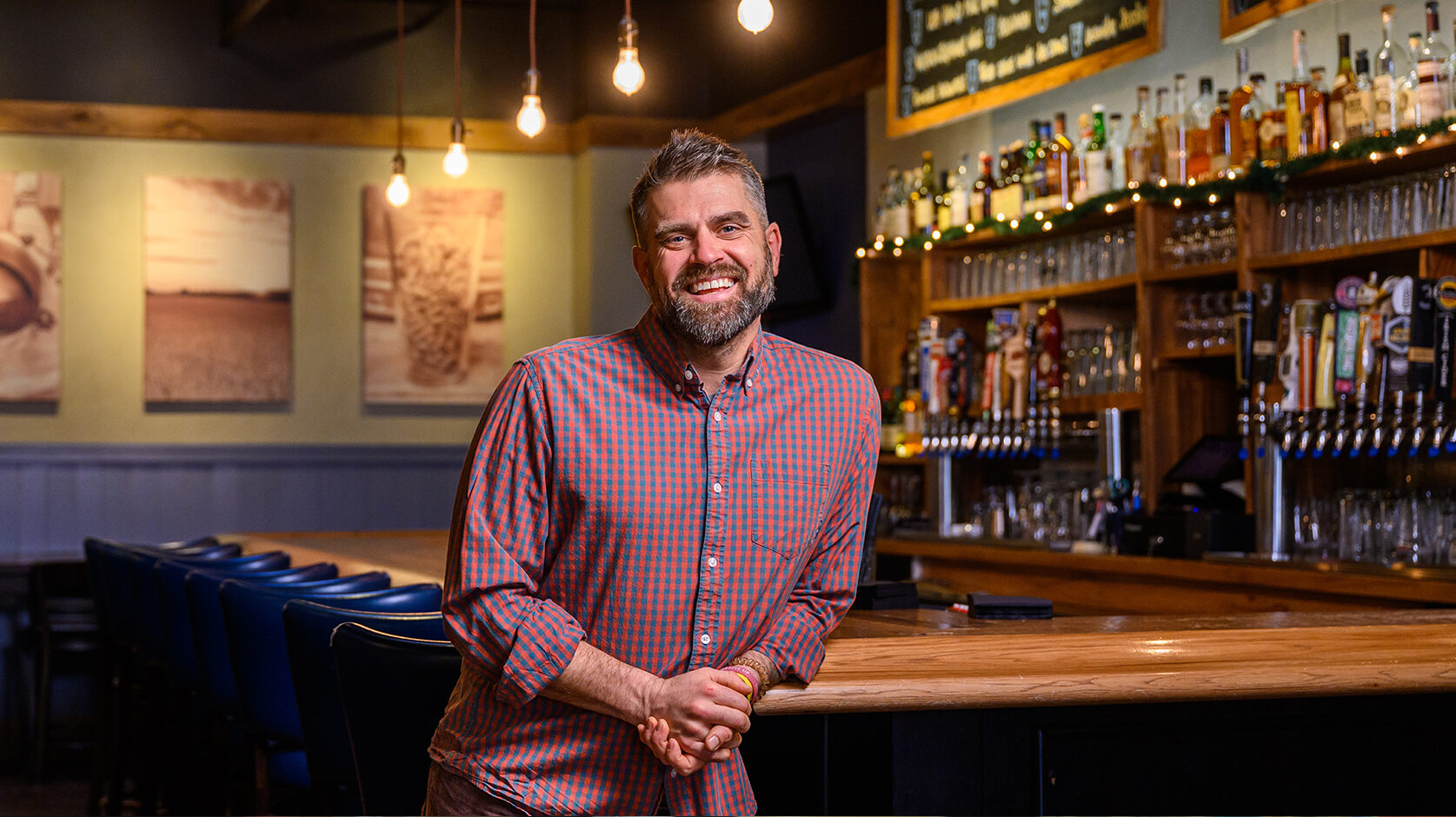


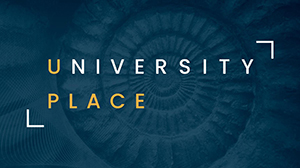
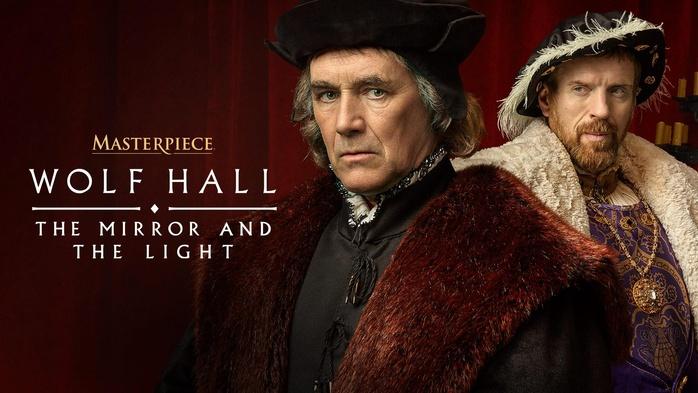

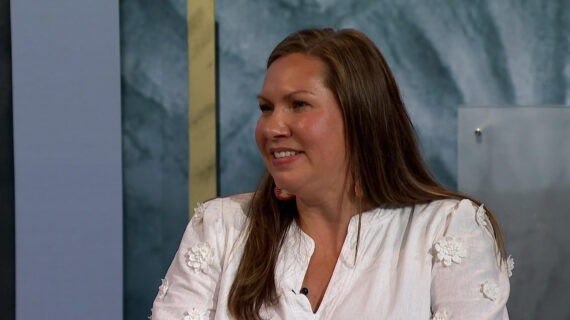
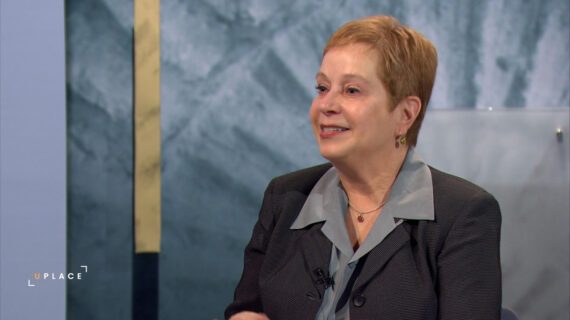

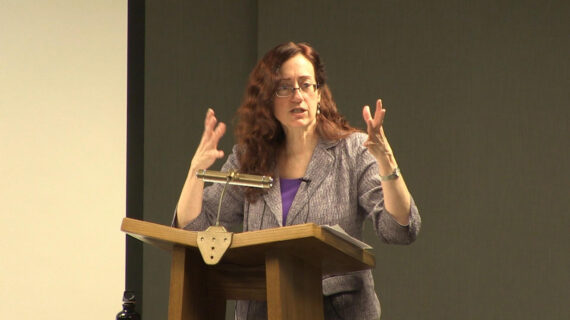



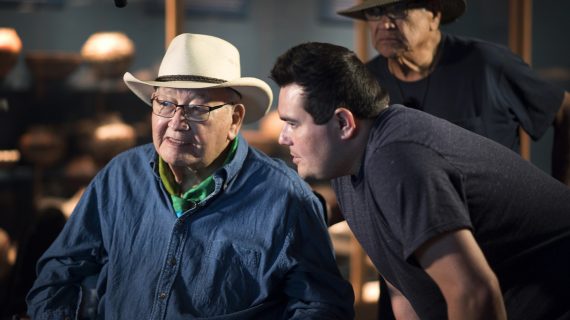

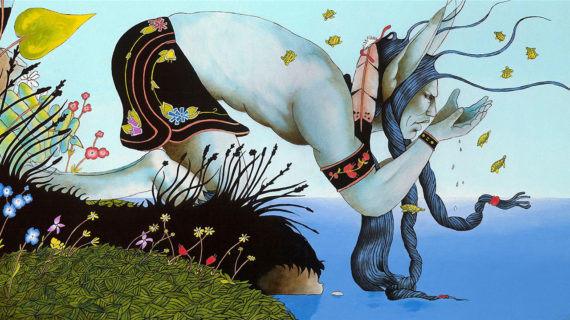

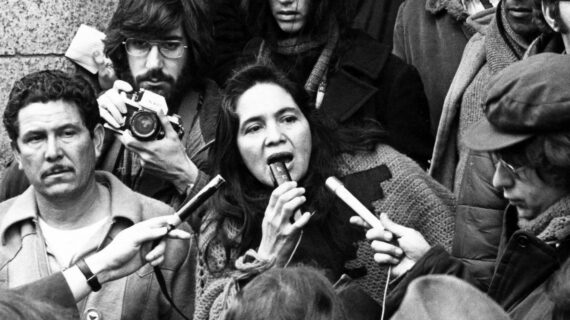

Follow Us